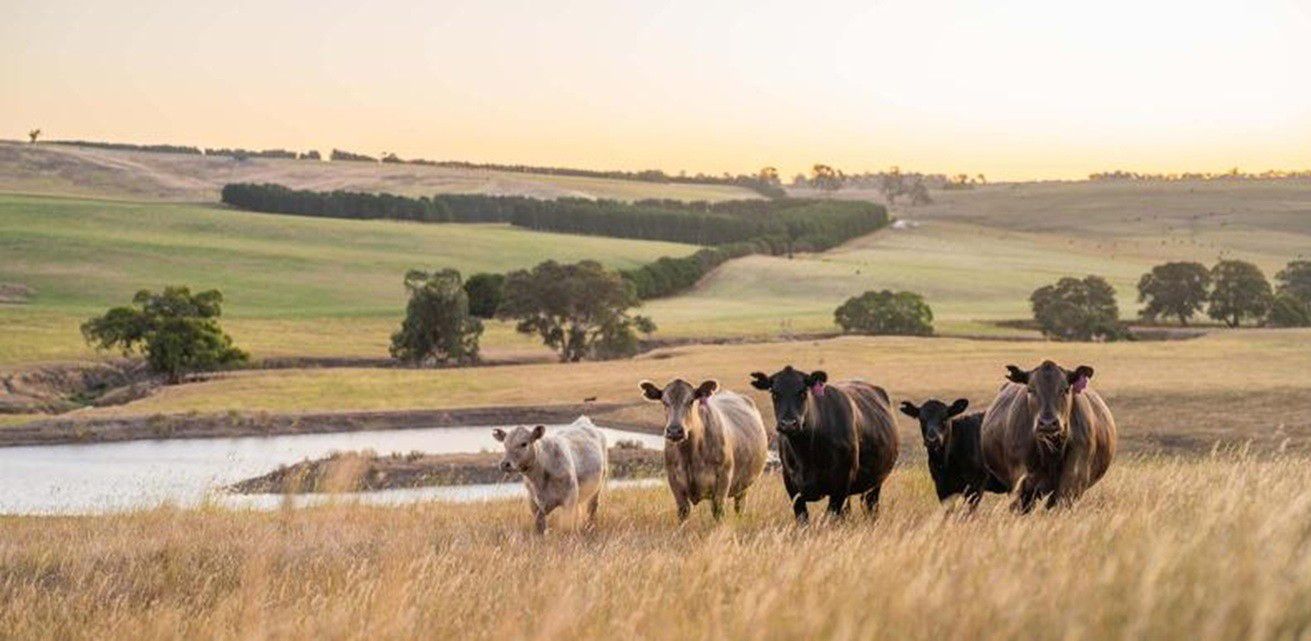1MG FlippingBooks
Misinformation over GM is harming our agricultural productivity and potential
The genetic modification (GM) of crops helps growers around the world produce more food and fibre with fewer inputs and meet the nutritional needs of a booming population. And in a developed country such as Australia, GM science allows farmers to supply consumer demand for cheaper and more abundant food. So, why do GM products face such negativity or fear from many sections of society?

Humans have been modifying crops for over 10,000 years through selective plant breeding. Here in Australia, William Farrer is celebrated as the father of the wheat industry for his plant breeding work just over 100 years ago. Yet today, the genetic modification of crops – merely the modern, more efficient technological extension of this historical practice – faces significant community and government opposition despite the benefits it delivers.
In their article on the relationship between science and food in the first volume of The Australian Farmer, Dr Heather Bray and Professor Rachel A. Ankeny called the development of GM crops “arguably the most important scientific intervention in the food system in recent years, and also the most contested.”
They posit that reasons for community opposition to GM often include ethical conundrums of whether nature should ever be manipulated, fears about food safety, a belief that GM is merely a way for big corporations to boost profits and even a lack of knowledge – “for many in the community, uncertainty about benefits is reason enough to avoid consuming GM foods.”
One would think that communication and education on the benefits of GM would be the key to overcoming this opposition. But GM crops have been around since the 1970s – and attempts to educate and communicate their benefits nearly as long – yet opposition still remains. However, as GM science progresses and we learn how to develop more consumer-friendly plant traits, will this situation change?
THE CURRENT SITUATION
Genetic modification allows the transfer of genes between unrelated plant species to develop desirable traits – most commonly, herbicide tolerance or pest resistance. Only three GM crops are currently commercially farmed in Australia, with their growth, transport and use strictly regulated by the Office of the Gene Technology Regulator (OGTR).
Pest-resistant and herbicide-tolerant GM cotton was first introduced to Australia in 1996 when 40,000ha of the crop was planted – it has since grown to encompass 714,000ha. GM canola was introduced in 2008, and by 2017 almost a quarter of the national canola crop was genetically modified. GM safflower was approved for commercial growth only last year, and you can read more about this crop and its potential in the next article in this chapter.
By using GM technology, Australian farmers have gained an estimated $1.37 billion in income and produced an additional 226,000 tonnes of canola that would otherwise have not been possible with conventional crops. GM crops have also enabled farmers to reduce their environmental footprint by eliminating the need for 22 million kilograms of herbicides and insecticides.
And with the world’s population growing to an expected 9 billion by 2050, GM technology is considered one of the best ways for farmers to meet the equivalent rise in food demands.
“The future of literally billions of people depends on changing the narrative about how we view genetically modified food and genetic technologies,” says Professor Ian Godwin, Director of the Centre for Crop Science at Queensland Alliance for Agriculture and Food Innovation (QAAFI) and author of the book, Good Enough to Eat?.
“If we are to produce more sustainable and nutritious food to meet the growing global demand – in the face of challenges from pests and diseases, eroded soils, lack of water and climate change – we need to be able to take the best from the latest genetic technologies and from organic and agro-ecological farming practices.”
SOUTH AUSTRALIA MISSING OUT?
In Australia, federal legislation allows anyone to grow and sell GM crops, as long as they have OGTR approval and licencing. Most states follow the federal model, except for South Australia and Tasmania, which both have a moratorium on the cultivation of GM crops. Western Australia, where a moratorium on GM was only overturned in 2016, is now home to the nation’s largest GM canola crop.
In South Australia, the situation may be changing after the newly-elected government commissioned a review into the moratorium and found it had negative economic consequences for SA farmers. The review estimated that the moratorium had cost the state $33 million since 2004 in lost canola earnings alone, and found there was no premium price for the state’s GM-free grain.
South Australia’s peak grain association, Grain Producers SA, has been a longstanding opponent of the moratorium and welcomed the results of review.
“The opportunity cost of maintaining the moratorium will only grow as new GM varieties from other crops are made available, such as super-high oleic safflower and omega-3 canola,” said GPSA Chair Wade Dabinett. “GPSA has consistently argued the moratorium offers little in the way of trade and marketing benefits to the majority of agricultural producers in SA, and only removes the option of using safe and effective GM tools.”
And it’s not just South Australian growers that are missing out – the practicalities of bringing a GM product to market are only made more difficult in a country where the laws are different in each state.
For companies that invest in GM technology, Australia is a difficult place to do business. And it’s easy to see why when GM canola seed grown in eastern Australia must be shipped to Western Australia rather than freighted by land due to South Australia’s moratorium, or when a farmer with property straddling the Victorian/SA border has to abide by different laws in different paddocks.
“It’s a difficult area for biotechnology and seed companies to navigate, for what are really expensive products to bring to market,” says Tony May, Head of Customer Marketing ANZ at Bayer Crop Science. “When there’s a clear legislative framework, you know what’s required. But when you overlay that with a patchwork of different legislative requirements, it’s difficult for companies to make investment decisions in the first place.”
COMMUNICATION BREAKDOWN
While farmers in Australia are voting with their feet and embracing GM crops, there is still an element of society that remains opposed. Despite 23 years of use in Australia, public misperception of the risks – health or otherwise – associated with GM acts as a barrier to future use and technological advancement.
“There’s a long-entrenched perception of GM that continues to be perpetuated without the intervention of facts,” says May. “And it does appear to be getting more difficult to counter fairly simplistic arguments with the use of science.”
Part of the problem is that GM food has been positioned in some quarters as the ‘opponent’ of organic food. The growth in the organic market has seen a newfound consumer interest in the provenance of food, which is undoubtedly a good thing. But organic and genetically-modified do not necessarily have to be at opposite ends of the scale – both methods of food production have their advantages and their place in society.
“We have to stop pretending that ‘natural is best’ and challenge the notion that organic food companies are not actually big global companies with a conflict of interest when it comes to the GM debate,” says Professor Godwin. “Our focus will continue to be on improving crop productivity, food quality and sustainability in the crop sciences, and we will use every safe, effective and innovative tool in the toolbox to do so.”
FARMERS THE ANSWER?
Even though the science is clear, communicating the benefits of GM crops to the public has not been easy. Perhaps this is because explaining the benefits of current GM crops requires your audience to understand farming, the way food is produced and the challenges farmers face. This may soon change though, as we begin to grow crops such as super-high oleic safflower that have a direct consumer benefit.
“Typically the GM crops that are in use around the world benefit farmers, which is great – they are herbicide or pest resistant and really improve farming systems,” says Nick Goddard, Executive Director of Australian Oilseeds Federation. “But there hasn’t been consumer benefit, so consumers are sceptical because they haven’t really understood what happens on the farm.
“We’re now getting into the realm of genetically modified crops that produce an end benefit for an end market, which might just change that paradigm a bit.”
Social media is also opening up new avenues for better communication when it comes to advancing the benefits of genetically modified crops. Social media allows the general public – who often have little-to-no contact with the food production cycle in their lives – an opportunity to put a face to a name and interact with real people.
“It’s about understanding what farmers do and how they produce food,” says May. “Some people probably aren’t going to listen to big corporations, but they might have more affinity with a farmer – seeing people’s individual stories on social media can be really powerful.”
It is clear that as long as public mistrust or misunderstanding of GM remains, Australia’s agricultural productivity and potential will be hampered. In order to embrace the science and the benefits that come with it, we need to better communicate why it is needed in the first place and foster a nationwide legislative environment that encourages investment in GM technology.
Farmers are the key to this, and we need to promote farming voices at both peak body level and on social media. Maybe, with a new wave of GM crops that deliver a direct benefit to the consumer and more farmers making their voices heard in the public sphere, the tide will begin to turn for the public perception of GM.
















